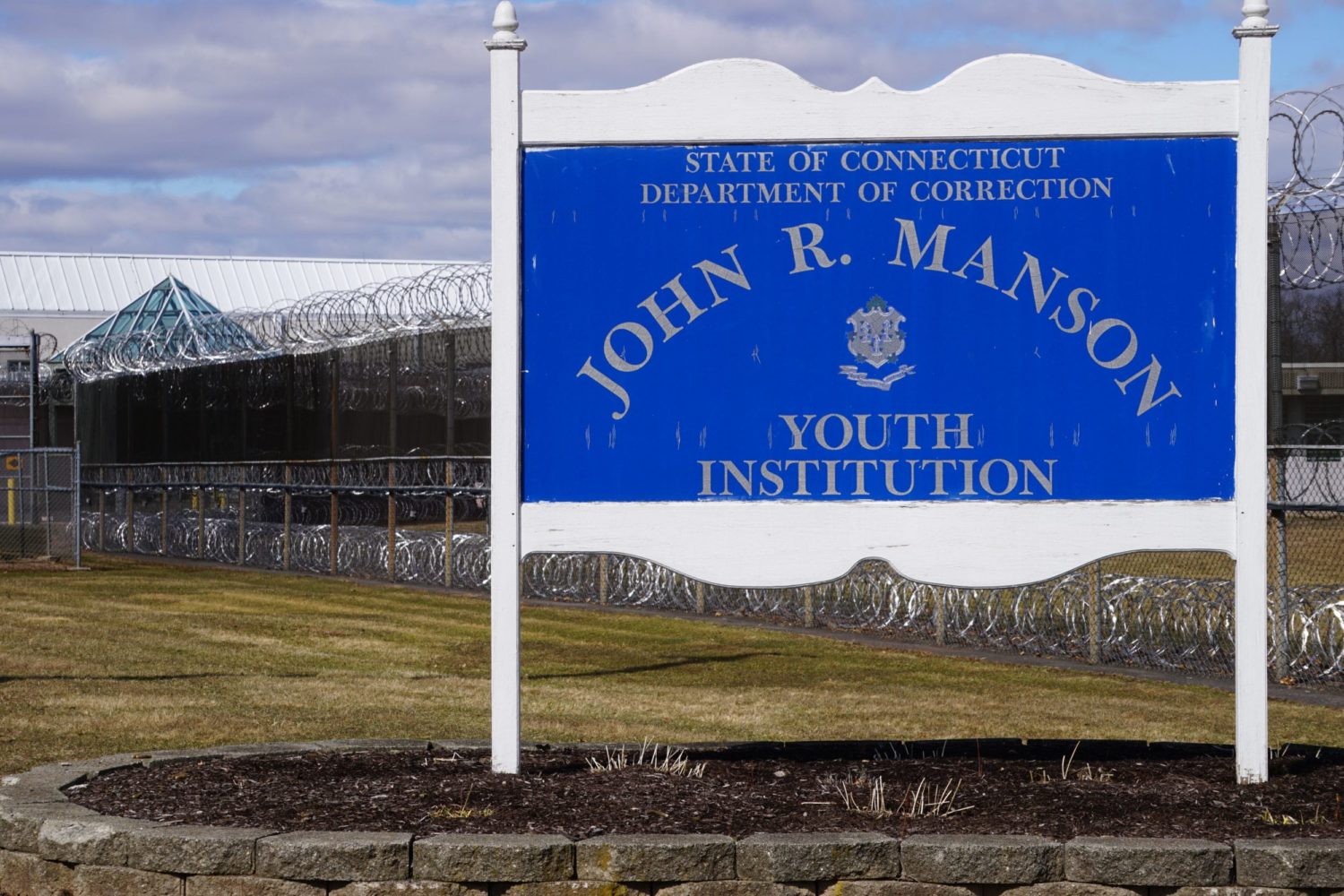
In a report released Thursday, the Office of the Child Advocate (OCA) recommended a significant change in the approach to running facilities for incarcerated youth in Connecticut, emphasizing that more should be done to rehabilitate these youth and address their histories of trauma.
The OCA began conducting audits of conditions of confinement for incarcerated youth following a 2016 change in state law, which directed the office to keep tabs on the issue. In 2019, the U.S. Department of Justice launched its own investigation into the Manson Youth Institute in Cheshire — which is the subject of the OCA’s report, along with the York Correctional Institution for women in Niantic — and found that youth were subjected to isolation, and deprived of mental health care and special education services.
Thursday’s report is the fourth OCA audit since 2019, and focuses on youth age 15 to 17-years-old in the custody of the Department of Correction. Acting Child Advocate Christina Ghio said a report on 18 to 21-year-olds will soon follow.
The OCA found that some improvements at Manson and York had been made since its previous audit: there is more mental health programming available than in previous years, and when disciplinary confinement occurs, the duration tends to be shorter. But in other areas, conditions actually grew worse in 2024 compared to 2023, like the number of instances in which isolation and pepper spray were used.
Ghio said in an interview Thursday that the challenge when it comes to incarcerated youth is balancing the need to rehabilitate individuals who have often experienced significant trauma and have not yet reached adulthood, with the fact that they are being incarcerated as a punitive measure.
“How do we provide a system that does provide accountability, but also focuses on treatment and rehabilitation and meeting the needs of the kids so that they can return to their communities and be able to engage with their communities?” Ghio said. “We need to be cognizant of the fact that even though they have been accused of committing crimes that can bring them into the adult justice system, they are still youths developmentally, and everything they experience while they’re incarcerated is going to impact their development.”
That includes the need to continue attending school. Incarcerated youth do continue to attend classes inside of the facilities. But the report notes a high rate of teacher absenteeism at Manson Youth Institute, and recommends hiring substitute teachers. Currently, when a teacher is out, Ghio says that youth simply miss out on learning.
The report also criticizes the way that the rating system used by the Department of Corrections classifies youth mental health needs. Many youth are classified by the department as not needing individual mental health services, according to the report. But when the OCA conducted a review of those cases, they found that many likely did need such services, due to histories of trauma and past mental health treatment.
Therapeutic groups are offered to all male youths incarcerated, though many do not participate. That’s why the report suggests that an altogether different model is needed, one that looks more like a rehabilitation center than a prison.
“These are kids who have significant trauma histories, and so our view is that they should instead provide a therapeutic milieu where everybody gets treatment,” Ghio said.
The report also highlights the use of pepper spray. While in 2022, 23 youth at Manson were subjected to pepper spray, this number declined to nine in 2023. In 2024, that number shot back up to 26. All of the youth subjected to pepper spray in 2024 were Black and Hispanic. Often, Ghio said, pepper spray is used when there are fights between youth.
Ghio said it was not clear why there were more pepper spray incidents in 2024 compared to 2023, but emphasized that changing the nature of the environment and increasing therapeutic activities would likely result in a decline in fighting, and therefore a decline in the use of such measures.
While the report does include some findings about the York Correctional Institution, where female incarcerated youth are placed, there are only a few individuals there and trends are not as clear. Group sessions, for example, are not possible at York since there is often only one girl incarcerated at a time.
The report includes a written response from the state Department of Correction and Department of Education.
The DOC response highlights the shift in how isolation occurs, from an approach referred to as Confinement to Quarters (CTQ) to the Reflection Accountability Mediation Program (RAMP), a form of isolation which allows incarcerated youth to continue to participate in school and visitation. The DOC also contends that more mental health services are occurring than were captured by the OCA.
“DOC disagrees that we are underestimating the needs of the juvenile population and it is not clear from the OCA report how they came to that conclusion. We provide mental health services to the entire juvenile population regardless of mental health need score. These interactions may not always be documented within the health record, however, the interactions and conversations are occurring.”
The agency also responded to the OCA’s finding about pepper spray.
“The Department of Correction continues efforts to reduce the use of cell confinement and chemical agent when managing incarcerated juvenile. … The agency conducts thorough reviews of incidents involving the use of chemical agent and continues to train staff on the use of other interventions where possible and chemical agent usage has decreased.”
Christina Quantara, the Executive Director of the Connecticut Justice Alliance, said that the report highlights the need for children to be taken out of adult prisons.
“Putting a child in an adult prison doesn’t impose the kind of consequences people think it does, and it only creates more trauma and harm,” Quantara said. Quantara added that most of the youth in such facilities have not yet been found guilty but are being held pre-trial.

